
International Research Journal of Engineering and Technology (IRJET) e-ISSN:2395-0056
Volume: 11 Issue: 08 | Aug 2024 www.irjet.net p-ISSN:2395-0072


International Research Journal of Engineering and Technology (IRJET) e-ISSN:2395-0056
Volume: 11 Issue: 08 | Aug 2024 www.irjet.net p-ISSN:2395-0072
Joseph Jeremiah Adekunle1 , Adebanwo Hassan Adebola2 , Ntekim Emmanuel Effiong3 Mahmud Mahmud Lawal4
1Department of Computer Science, National Open University of Nigeria
. 2Department of Electrical and Electronic Engineering, Federal University of Petroleum Resources Effurun
3Automotive Mechatronics Management Department, University of Applied Sciences Upper Austria
4 Department of Electrical Engineering Ahmadu Bello University Zaria, Nigeria
Abstract - Deep learning has significantly advanced the field of computer vision, transforming how machines interpret visual data and enabling new applications such as autonomous vehicles. This article reviews the development of deep learning technologies, from early pattern recognition to sophisticated Convolutional Neural Networks (CNNs). It examines the role of deep learning in improving object detection accuracy and real-time performance, which is crucial for the safe operation of autonomous vehicles. The discussion addresses technical challenges including data scarcity, high computational costs, and the need for large-scale datasets. Ethical concerns such as privacy issues and potential bias in AI models are also explored. The article concludes by considering future directions, including advancements in deep learning models and their integration with other AI technologies. It highlights the potential for deep learning to revolutionize transportation and underscores the importance of collaboration between tech companies, automakers, and regulators to address the challenges and ensure the responsible deployment of autonomous vehicles.
KEYWORDS: Deep Learning, Computer Vision, Object detection, Autonomous Vehicles
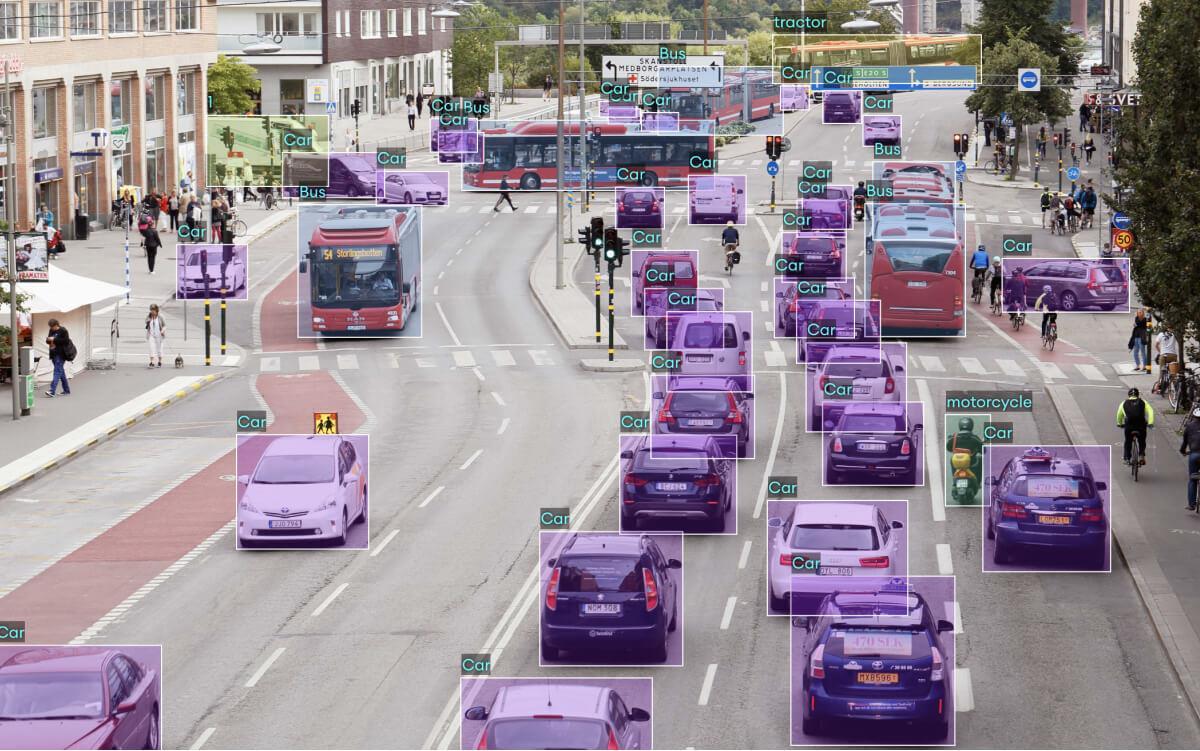

International Research Journal of Engineering and Technology (IRJET) e-ISSN:2395-0056
Volume: 11 Issue: 08 | Aug 2024 www.irjet.net p-ISSN:2395-0072
Computervisionisarapidlygrowingfieldwithinartificialintelligence(AI)thatenablesmachinestointerpretandunderstand the visual world. By processing and analyzing digital images or videos, computer vision systems can extract meaningful information, identify patterns, and make decisions based on visual input. The significance of computer vision extends across various applications, including facial recognition, medical imaging, autonomous vehicles, and industrial automation. For instance, in the healthcare sector, computer vision aids in diagnosing diseases through image analysis, while in retail, it enhancescustomerexperiencebyenablingautomatedcheckoutsystems[1].
Computervisionhasevolvedsignificantlysinceitsinceptioninthe1960swhensimplepatternrecognitionbasedonstatistical methodswasthenorm[2].The1980sand1990ssawtheintroductionofbasicneuralnetworks,butitwasn'tuntiltheadvent of deep learning technologies in the 2000s that dramatic improvements were realized. The development of Convolutional Neural Networks (CNNs) by Yann LeCun et al. in 1998 was a pivotal moment, laying the groundwork for modern computer vision applications [3]. Since then, the capabilities of deep learning in processing and interpreting visual data have grown exponentially,fueledbyadvancesincomputationalpowerandtheavailabilityoflargedatasets.
The advent of deep learning has marked a significant turning point in the development of computer vision. Traditional computervisiontechniques reliedheavilyon manual featureextractionand rule-basedalgorithms, whichwere oftenlimited in accuracy and scalability. Deep learning, particularly through the use of CNNs, has revolutionized the field by automating featureextractionandenablingmachinestolearncomplexpatternsfromlargedatasets.Thisshifthasdramaticallyimproved the accuracy of tasks like object detection, image classification, and segmentation [4]. For example, models like AlexNet, VGGNet, and ResNet have set new benchmarks in object detection, enabling real-time processing and the ability to detect multipleobjectsincomplexenvironments[5].
Deep learning has become a cornerstone of modern computer vision, particularly in the realms of object detection and autonomous vehicles. Its ability to learn hierarchical representations and improve traditional algorithms has made it indispensable for these applications. Deep learning techniques have significantly enhanced the accuracy and speed of object detectionsystems,whicharecrucialforthereal-timeprocessingneededinautonomousdriving[6].Integratingdeeplearning intothesesystemshasimprovedperformanceandenablednewfunctionalitiesthatwerepreviouslychallengingorimpossible toachieve[7].
The main focus of this paper is to explore the journey of deep learning in computer vision, specifically from basic object detection techniques to their application in autonomous vehicles. We aim to provide a comprehensive review of the technological advancements brought about by deep learning, discuss the integration of these technologies into autonomous vehicle systems, and examine the challenges and prospects of these applications. By examining key milestones, case studies, and prospects, this research will highlight the transformative effects of deep learning on both the technology behind object detectionandthebroaderimplicationsforautonomousvehicledevelopment[8].
2.1
The evolution of deep learning in computer vision marks a significant shift from traditional methods that were primarily dependent on manual feature extraction and classical machine learning algorithms. Early computer vision techniques relied heavily on edge detection, template matching, and histogram-based methods, which were limited in their ability to handle complexpatternsandvariabilityinreal-worlddata[9].Theintroductionofneuralnetworks,particularlyConvolutionalNeural Networks (CNNs), brought about a paradigm shift, enabling automated feature extraction and hierarchical learning directly from raw pixel data [10]. LeCun et al.'s development of CNNs in 1998 laid the foundation for modern computer vision applications [11]. CNNs became the cornerstone of deep learning in vision tasks due to their ability to capture spatial hierarchies in images through convolutional layers. This was a significant advancement over traditional techniques, as it allowedfortheprocessingoflarge-scaleimageswithhighaccuracy[12].ThebreakthroughofAlexNetinthe2012ImageNet competition further showcased the potential of deep learning, achieving a top-5 error rate significantly lower than previous methods[13].Thissuccesssparkedwidespreadinterestandadoptionofdeeplearningtechniquesincomputervision.

International Research Journal of Engineering and Technology (IRJET) e-ISSN:2395-0056
Volume: 11 Issue: 08 | Aug 2024 www.irjet.net p-ISSN:2395-0072

Object detection, a critical task in computer vision, has evolved substantially with the advent of deep learning. Traditional objectdetectionmethods,suchastheViola-JonesalgorithmandHistogramofOrientedGradients(HOG)withSupportVector Machines (SVM), were among the first to achieve real-time detection, but they struggled with accuracy and scalability in complex environments [14]. These methods relied on handcrafted features and were limited by their inability to generalize acrossdifferentobjectclassesandvariations.
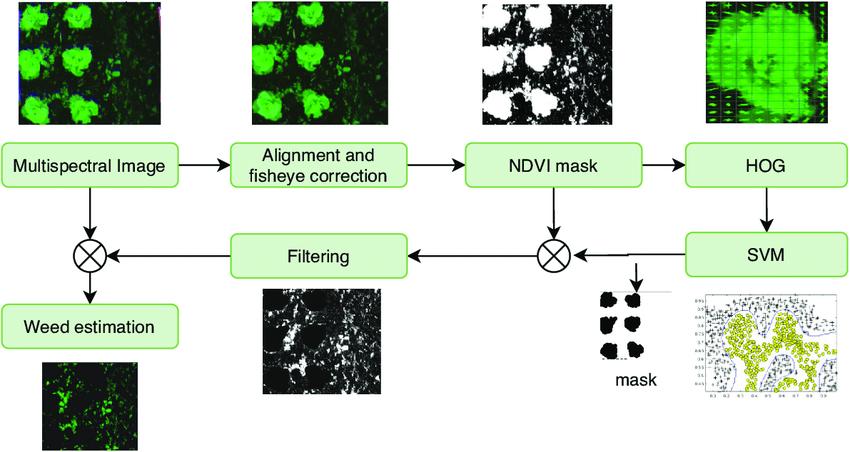
Deep learning-based object detection frameworks, such as Region-Based CNN (R-CNN), Fast R-CNN, and Faster R-CNN, revolutionized the field by introducing end-to-end learning pipelines that combined feature extraction, classification, and localizationintoasinglemodel[15].ThedevelopmentofYOLO(YouOnlyLookOnce)andSSD(SingleShotMultiboxDetector)

International Research Journal of Engineering and Technology (IRJET) e-ISSN:2395-0056
Volume: 11 Issue: 08 | Aug 2024 www.irjet.net p-ISSN:2395-0072
further pushed the boundaries by enabling real-time object detection with high accuracy, making these techniques ideal for applicationsrequiringquickdecision-making,suchasautonomousvehicles[16].
The integration of deep learning into autonomous vehicles represents one of the most transformative applications of computer vision. Autonomous vehicles rely heavily on computer vision for tasks such as lane detection, traffic sign recognition,pedestriandetection,andobstacleavoidance[17].Deeplearningmodelshaveplayedacrucialroleinimproving the robustness and reliability of these systems by enabling real-time perception and decision-making. One of the key challenges in autonomous driving is the need for accurate object detection and scene understanding in diverse and dynamic environments. Deep learning models, particularly those based on CNNs, have been instrumental in addressing these challenges.Forinstance,modelslikeResNetandYOLOhavebeenappliedtodetectmultipleobjectssimultaneouslyincomplex traffic scenarios, improving both safety and efficiency [18]. Moreover, the integration of deep reinforcement learning has furtherenhancedtheabilityofautonomoussystemstoadapttonewsituationsbylearningoptimaldrivingstrategiesthrough continuousinteractionwiththeenvironment[19].
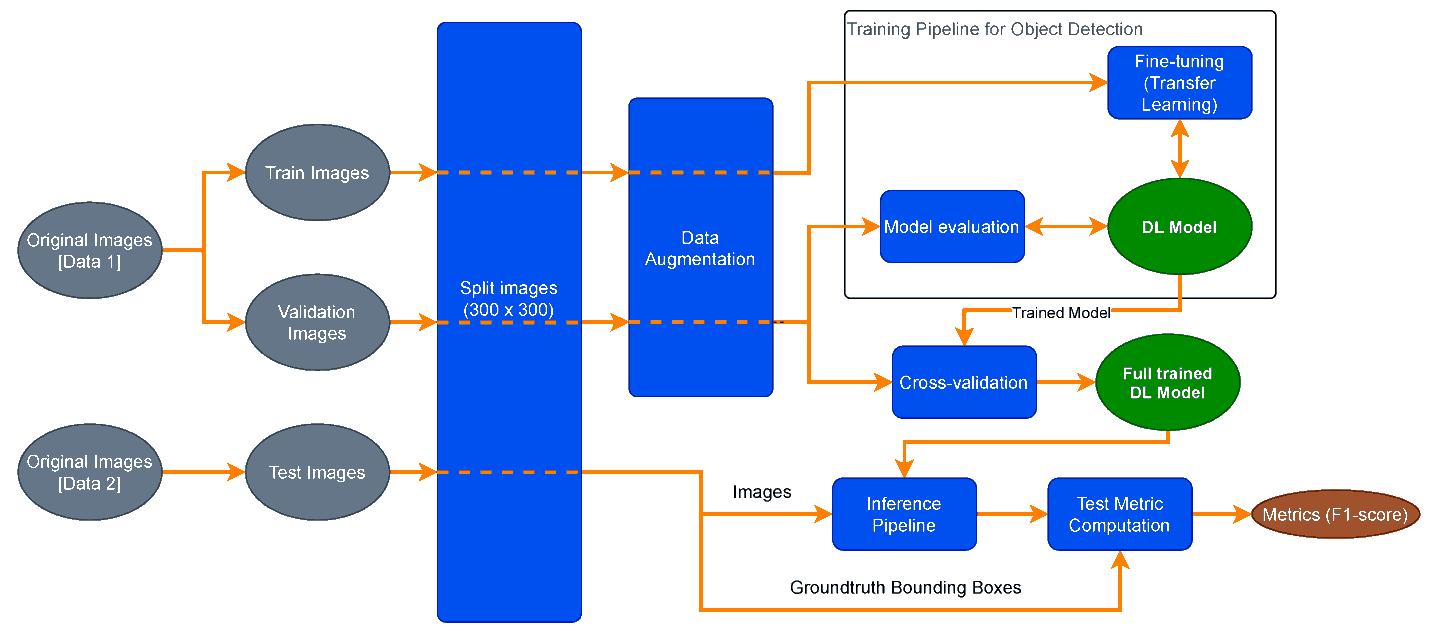
As autonomous vehicles require a comprehensive understanding of their surroundings, the development of 3D object detectionandsemanticsegmentationtechniqueshasbecomeincreasinglyimportant.Traditional2Ddetectionmethods,while effective,arelimitedintheirabilitytocapturedepthandspatialrelationshipsbetweenobjects.Toaddressthis,deeplearning models have been extended to work with 3D data, utilizing inputs from LiDAR, stereo cameras, and depth sensors [20]. PointNetanditsvariants,suchasPointNet++andFrustumPointNets,have been pivotal inadvancing3D objectdetection by directlyprocessingpointcloudsandlearningpoint-wisefeatures[21].Thesemodelshaveshownsignificantimprovementsin detecting objects in cluttered scenes and varying lighting conditions, which are common challenges in autonomous driving [22].Additionally,semantic segmentationmodelslikeDeepLabandU-Nethavebeenadaptedfor 3Ddata,allowing for pixellevel understanding of the environment, which is crucial for tasks such as path planning and obstacle avoidance in autonomousvehicles[23].

International Research Journal of Engineering and Technology (IRJET) e-ISSN:2395-0056
Volume: 11 Issue: 08 | Aug 2024 www.irjet.net p-ISSN:2395-0072

Despite the advancements in deep learning for autonomous vehicles, the robustness of these systems remains a critical concern,particularlyinthefaceofadversarialattacks.Adversarialexamples,whicharesmallperturbationsininputdatathat causedeeplearningmodelstomakeincorrectpredictions,poseasignificantthreattothesafetyandreliabilityofautonomous systems[24].Researchinthisareahasfocusedondevelopingmethodstodetectandmitigatetheeffectsofadversarialattacks, withtechniquessuchasadversarialtraining,defensivedistillation,andinputpreprocessingshowingpromiseinenhancingthe robustnessofdeeplearningmodels[25].Theimportanceofrobustnessinautonomousdrivingcannotbeoverstated,aseven minorerrorscanleadtocatastrophicoutcomes.Therefore,ongoingresearchisdedicatedtoimprovingtheresilienceofdeep learningmodelsagainstbothadversarial andnatural perturbations,ensuringthatautonomousvehiclescanoperatesafelyin allconditions[26].
Thefutureofdeeplearningincomputervision,particularlyinthecontextofautonomousvehicles,isfilledwithopportunities andchallenges.Whilecurrentmodelshaveachievedremarkablesuccess,thereisstillroomforimprovementinareassuchas interpretability, energy efficiency, and generalization across diverse environments [27]. The development of explainable AI techniquesisparticularlyimportantforbuildingtrustinautonomoussystems,asitallowsusersandregulatorstounderstand the decision-making processes of deep learning models [28]. Additionally, the integration of neuromorphic computing and quantum computing holds the potential to further accelerate the capabilities of deep learning in computer vision by offering new paradigms for processing and learning from visual data [29]. These advancements could lead to more efficient and scalablemodelsthatcanhandletheever-increasingdemandsofreal-timeperceptioninautonomousvehicles.
Autonomousvehicles,oftenreferredtoasself-drivingcars,representatransformativeinnovationintheautomotiveindustry, promising to revolutionize transportation by reducing human error, enhancing road safety, and improving traffic efficiency. Thesevehiclesoperatewithminimalornohumanintervention,relyingonadvancedtechnologiessuchasartificialintelligence (AI), machine learning, and computer vision to perceive their environment, make decisions, and navigate through various driving scenarios [30]. The development of autonomous vehicles is motivated by the potential to reduce traffic accidents, lower emissions, and provide mobility solutions for people who are unable to drive. The Society of Automotive Engineers (SAE)categorizesautonomousvehiclesintosixlevels,rangingfromLevel0(noautomation)toLevel5(fullautomation)[31]. Levels 1 to 3 involve varying degrees of driver assistance, where the vehicle can control certain aspects of driving such as steeringoracceleration,butthehumandrivermustremainengagedandreadytotakecontrolatanymoment.Level4vehicles

International Research Journal of Engineering and Technology (IRJET) e-ISSN:2395-0056
Volume: 11 Issue: 08 | Aug 2024 www.irjet.net p-ISSN:2395-0072
can operate autonomously in specific conditions or environments, such as urban areas or highways, without human intervention. However, they still require human control in certain situations. Level 5 represents full automation, where the vehiclecanhandlealldrivingtasksinanyenvironmentwithouthumaninput[32].
Computervisionisacriticaltechnologythatenablesautonomousvehiclestoperceiveandunderstandtheirsurroundings.By processingvisualdatafromcamerasandothersensors,computervisionsystemscandetect,classify,andtrackobjectssuchas vehicles,pedestrians,trafficsigns,androadmarkings[33].Thisvisualperceptionisessentialformakingreal-timedecisions, such as adjusting speed, changing lanes, or stopping at traffic lights. One of the primary tasks of computer vision in autonomous vehicles is object detection, where deep learning models like Convolutional Neural Networks (CNNs) are employed to identify and locate objects within the vehicle's environment. Models such as YOLO (You Only Look Once) and Faster R-CNN have become the industry standard for real-time object detection due to their accuracy and speed [34]. These models are capable of detecting multiple objects simultaneously, even in complex and dynamic driving scenarios, which is crucialforthesafeoperationofautonomousvehicles.
Lane detection is another critical function of computer vision in autonomous vehicles. Accurate lane detection allows the vehicle to stay within its lane, execute safe lane changes, and navigate curves. Techniques such as the Hough Transform and deep learning-based approaches like SegNet are commonly used for lane detection [35]. These methods analyze the visual datacapturedbycamerastoidentifylaneboundariesandgenerateavirtualpathforthevehicletofollow.
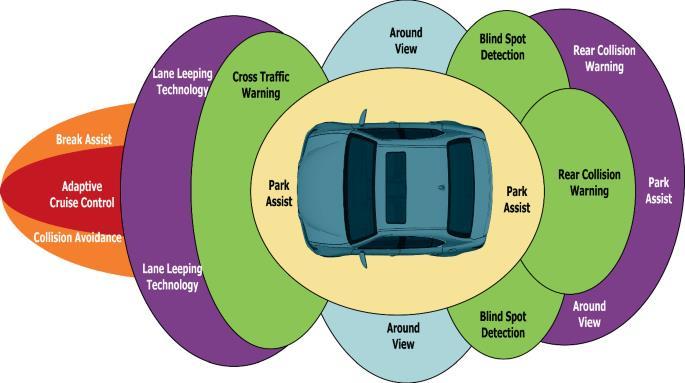
Semantic segmentation isanotherkeyapplicationofcomputervisioninautonomousvehicles,whereeverypixelinanimage is classified into predefined categories such as road, sidewalk, vehicle, and pedestrian. This pixel-level understanding of the environmentenablesthevehicletoaccuratelyinterpretitssurroundingsandmakeinformeddecisions.Deeplearningmodels likeU-NetandDeepLabarewidelyusedforsemanticsegmentationinautonomousdrivingsystems[36].

International Research Journal of Engineering and Technology (IRJET) e-ISSN:2395-0056
Volume: 11 Issue: 08 | Aug 2024 www.irjet.net p-ISSN:2395-0072
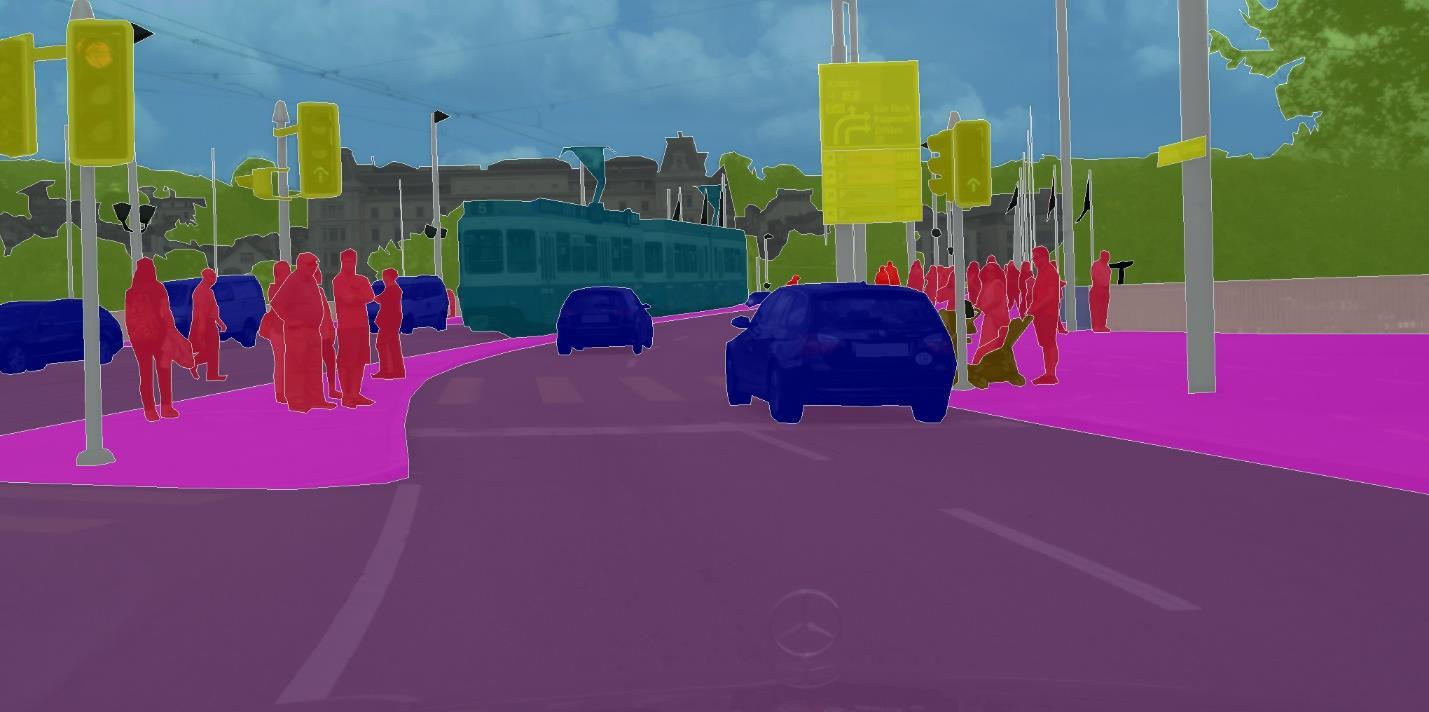
Sensor fusion isanotheressentialaspectofcomputervisioninautonomousvehicles,wheredatafromvarioussensorssuchas cameras, LiDAR, radar, and ultrasonic sensors are combined to create a comprehensive understanding of the environment. This fusion of data enhances the reliability and accuracy of the vehicle's perception system, allowing it to operate safely in variousweatherandlightingconditions[37].
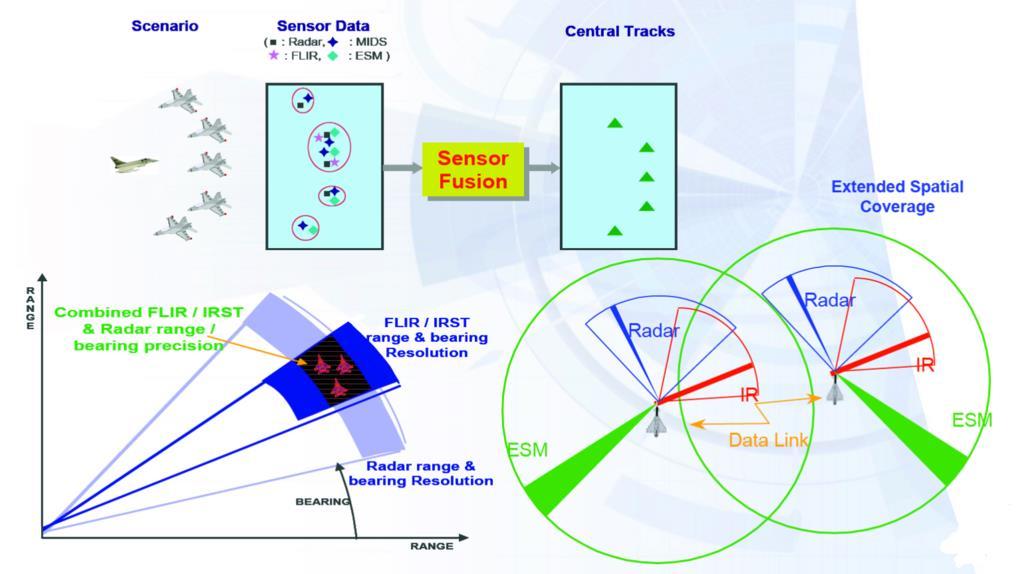

International Research Journal of Engineering and Technology (IRJET) e-ISSN:2395-0056
Volume: 11 Issue: 08 | Aug 2024 www.irjet.net p-ISSN:2395-0072
One of the primary technical challenges in the development of autonomous vehicles is the need for large-scale, high-quality datasets. Deep learning models, particularly those used in computer vision for object detection and semantic segmentation, requirevastamountsoflabeleddatatoachievehighaccuracy.However,acquiringandannotatingsuchdatasetsisbothtimeconsumingandcostly,especiallywhenconsideringtheneedfordiversedatacoveringvariousdrivingconditions,weather,and environments[38].Moreover,dataarescarceforrareevents,suchasaccidentsorunusualroadconditions,whicharecritical fortrainingmodelstohandleedgecases.Anothersignificantchallengeisthecomputationalcostassociatedwithtrainingand deployingdeeplearningmodels.Autonomousvehiclesrelyonreal-timeprocessingofvisualdata,whichrequiressubstantial computationalpower.High-performanceGPUsandspecializedhardwarelikeTensorProcessingUnits(TPUs)areessentialto meetthesedemands,buttheycomewithincreasedenergyconsumptionandhighercosts[39].Furthermore,thecomplexityof deeplearningmodelscanleadtolongertrainingtimesanddifficultiesinachievingreal-timeinference,whichiscriticalforthe safeoperationofautonomousvehicles.
The widespread adoption of autonomous vehicles raises several ethical concerns, particularly regarding privacy and bias. Autonomous vehicles are equipped with numerous sensors and cameras that continuously collect data about their surroundings,includingothervehiclesandpedestrians.Thisconstantdatacollectionraisesprivacyissues,asindividualsmay be recorded without their consent, and the data could potentially be misused or accessed by unauthorized parties [40]. Additionally, the use of AI models in autonomous vehicles presents the risk of bias, as these models are trained on datasets that may not be fully representative of the diverse populations and environments in which the vehicles operate. This could leadtounfairorunsafeoutcomes,particularlyformarginalizedcommunitiesorinunderrepresentedregions[41].Thesocietal impact of autonomous vehicles also presents ethical dilemmas. While the technology promises to improve road safety and reduce traffic fatalities, it may also lead to significant job displacement, particularly in industries like trucking and taxi services.Thetransitiontoautonomousvehiclescouldexacerbateeconomicinequalitiesifnotmanagedcarefully,anditraises questions about the ethical responsibility of companies and governments to support workers who are affected by these changes[42].
Safetyisaparamountconcerninthedeploymentofautonomousvehicles,particularlygiventherelianceondeeplearningfor critical tasks like object detection and decision-making. Deep learning models are known to be vulnerable to adversarial attacks, where small, imperceptible changes to input data can cause the model to make incorrect predictions [43]. In the context of autonomous vehicles, such vulnerabilities could lead to catastrophic outcomes, such as failing to recognize a pedestrian or misinterpreting a traffic signal. Ensuring the reliability and robustness of these models is crucial for the safe deployment of autonomous vehicles. Moreover, the inherent complexity of deep learning models can make them difficult to interpretandunderstand,leadingtochallengesindiagnosingandcorrectingerrors.Thislackoftransparency,oftenreferred to as the "black box" problem, complicates efforts to ensure that autonomous vehicles behave safely in all situations, particularly in rare or unexpected scenarios [44]. As a result, there is ongoing research into explainable AI and methods for improvingtheinterpretabilityofdeeplearningmodelsusedinautonomousdriving.
The future of autonomous vehicles is closely tied to advancements in deep learning. As research in this field progresses, we can expect the development of more efficient models that require less computational power and can operate with smaller datasets.Techniquessuchastransferlearning,wheremodelstrainedononetaskareadaptedforanother,andunsupervised learning, which does not require labeled data, are likely to play a significant role in reducing the data and computational demands of deep learning [45]. Additionally, the integration of deep learning with other AI technologies, such as reinforcementlearningandneuromorphiccomputing,couldleadtomoreadaptiveandresilientautonomousdrivingsystems.

International Research Journal of Engineering and Technology (IRJET) e-ISSN:2395-0056
Volume: 11 Issue: 08 | Aug 2024 www.irjet.net p-ISSN:2395-0072
The potential impact of deep learning on the transportation industry is profound. As autonomous vehicles become more capable and widespread, they could lead to significant changes in how we think about transportation. For example, the adoption of autonomous vehicles could reduce the need for personal car ownership, leading to a rise in shared mobility servicesanda shifttowards moresustainableurbantransportationsystems[46].Moreover,theintegration ofdeeplearning into logistics and supply chain management could optimize delivery routes, reduce fuel consumption, and improve the efficiencyofgoodstransportation,furtherrevolutionizingtheindustry.
The successful deployment of autonomous vehicles will require close collaboration between technology companies, automakers, and regulators. As deep learning continues to advance, regulatory frameworks must keep pace with the technology to ensure the safety and reliability of autonomous vehicles on public roads. This includes the development of standardsfordataprivacy,cybersecurity,andtheethicaluseofAIintransportation[47].Additionally,collaborationbetween industry stakeholders will be crucial in addressing the challenges of data sharing, interoperability, and the integration of autonomousvehiclesintoexistingtransportationinfrastructure.
The evolution of deep learning has dramatically transformed the field of computer vision, driving advancements in object detection and enabling the development of autonomous vehicles. As this technology continues to evolve, its impact on the transportationindustryandsocietyatlargecannotbeunderstated.Autonomousvehicles,onceafuturisticconcept,arerapidly becomingareality,thankstotheintegrationofdeeplearningalgorithmscapableofprocessingandinterpretingvastamounts of visual data in real-time. However, the journey toward fully autonomous vehicles is fraught with challenges. Technical hurdles, such as data scarcity and the high computational costs associated with deep learning, must be overcome to ensure thesesystems'reliabilityandsafety.Moreover,ethicalconsiderations,includingprivacyconcernsandthepotentialforbiasin AImodels,mustbeaddressedtobuildpublictrustandensuretheequitabledeploymentofautonomoustechnologies.
Finally, the continued advancements in deep learning hold great promise for further revolutionizing transportation. More efficient models, better integration with other AI technologies, and collaborative efforts between industry stakeholders and regulators will be essential in navigating the complex landscape of autonomous vehicle development. As these technologies mature, they have the potential to reshape how we approach mobility, leading to safer roads, more efficient transportation systems, and a profound societal shift towards automated driving. As research and development continue to push the boundaries of what is possible, we stand on the cusp of a new era in transportation, where the capabilities of deep learning willredefinehowwemovethroughtheworld.
References
[1] Szeliski,R.(2010). Computer Vision: Algorithms and Applications.Springer.
[2] Ballard,D.H.,&Brown,C.M.(1982). Computer Vision.PrenticeHall.
[3] LeCun, Y., Bottou, L., Bengio, Y., & Haffner, P. (1998). Gradient-based learning applied to document recognition. Proceedings of the IEEE,86(11),2278-2324.
[4] Krizhevsky,A.,Sutskever,I.,&Hinton,G.E.(2012).Imagenetclassificationwithdeepconvolutionalneuralnetworks. Advances in neural information processing systems,25.
[5] Simonyan, K., & Zisserman, A. (2014). Very deep convolutional networks for large-scale image recognition. arXiv preprint arXiv:1409.1556
[6] He, K., Zhang, X., Ren, S., & Sun, J. (2016). Deep residual learning for image recognition. In Proceedings of the IEEE conference on computer vision and pattern recognition (pp.770-778).

International Research Journal of Engineering and Technology (IRJET) e-ISSN:2395-0056
Volume: 11 Issue: 08 | Aug 2024 www.irjet.net p-ISSN:2395-0072
[7] Redmon,J.,&Farhadi,A.(2018).Yolov3:Anincrementalimprovement. arXiv preprint arXiv:1804.02767.
[8] Chen, C., Seff, A., Kornhauser, A., & Xiao, J. (2015). DeepDriving: Learning affordance for direct perception in autonomousdriving.In Proceedings of the IEEE International Conference on Computer Vision (pp.2722-2730).
[9] Viola,P.,&Jones,M.(2001).Rapidobjectdetectionusingaboostedcascadeofsimplefeatures. Proceedings of the IEEE Conference on Computer Vision and Pattern Recognition (CVPR).
[10] Dalal, N., & Triggs, B. (2005). Histograms of Oriented Gradients for Human Detection. Proceedings of the IEEE Conference on Computer Vision and Pattern Recognition (CVPR).
[11] LeCun, Y., Bottou, L., Bengio, Y., & Haffner, P. (1998). Gradient-based learning applied to document recognition. Proceedings of the IEEE,86(11),2278-2324.
[12] Simonyan, K., & Zisserman, A. (2014). Very deep convolutional networks for large-scale image recognition. arXiv preprint arXiv:1409.1556
[13] Krizhevsky,A.,Sutskever,I.,&Hinton,G.E.(2012).Imagenetclassificationwithdeepconvolutionalneuralnetworks. Advances in neural information processing systems,25.
[14] Girshick, R., Donahue, J., Darrell, T., & Malik, J. (2014). Rich feature hierarchies for accurate object detection and semanticsegmentation. Proceedings of the IEEE conference on computer vision and pattern recognition.
[15] Ren,S.,He,K.,Girshick,R.,&Sun,J.(2015).FasterR-CNN:TowardsReal-TimeObjectDetectionwithRegionProposal Networks. Advances in neural information processing systems.
[16] Redmon,J.,&Farhadi,A.(2018).Yolov3:Anincrementalimprovement. arXiv preprint arXiv:1804.02767
[17] Chen,L.,Papandreou,G.,Kokkinos,I.,Murphy,K.,&Yuille,A.L.(2018).DeepLab:SemanticImageSegmentationwith Deep Convolutional Nets, Atrous Convolution, and Fully Connected CRFs. IEEE Transactions on Pattern Analysis and Machine Intelligence
[18] He, K., Zhang, X., Ren, S., & Sun, J. (2016). Deep residual learning for image recognition. Proceedings of the IEEE conference on computer vision and pattern recognition
[19] Mnih, V., Kavukcuoglu, K., Silver, D., Rusu, A. A., Veness, J., Bellemare, M. G., ... & Hassabis, D. (2015). Human-level controlthroughdeepreinforcementlearning. Nature,518(7540),529-533.
[20] Qi, C. R., Su, H., Mo, K., & Guibas, L. J. (2017). PointNet: Deep learning on point sets for 3D classification and segmentation. Proceedings of the IEEE conference on computer vision and pattern recognition
[21] Qi, C. R., Yi, L., Su, H., & Guibas, L. J. (2017). PointNet++: Deep hierarchical feature learning on point sets in a metric space. Advances in neural information processing systems
[22] Huang,Z.,Wang,Y.,Heng,Q.A.,Yuan,J.,&Liu,Z.(2020).FrustumPointNetsfor3DObjectDetectionfromRGB-DData. IEEE Transactions on Automation Science and Engineering
[23] Ronneberger, O., Fischer, P., & Brox, T. (2015). U-net: Convolutional networks for biomedical image segmentation. International Conference on Medical Image Computing and Computer-Assisted Intervention.
[24] Goodfellow, I. J., Shlens, J., & Szegedy, C. (2015). Explaining and harnessing adversarial examples. arXiv preprint arXiv:1412.6572
[25] Papernot, N., McDaniel, P., Wu, X., Jha, S., & Swami, A. (2016). Distillation as a defense to adversarial perturbations againstdeepneuralnetworks. IEEE Symposium on Security and Privacy (SP)

International Research Journal of Engineering and Technology (IRJET) e-ISSN:2395-0056
Volume: 11 Issue: 08 | Aug 2024 www.irjet.net p-ISSN:2395-0072
[26] Madry, A., Makelov, A., Schmidt, L., Tsipras, D., & Vladu, A. (2018). Towards deep learning models resistant to adversarialattacks. arXiv preprint arXiv:1706.06083.
[27] Gilpin, L. H., Bau, D., Yuan, B. Z., Bajwa, A., Specter, M., & Kagal, L. (2018). Explaining explanations: An overview of interpretability of machine learning. 2018 IEEE 5th International Conference on data science and advanced analytics (DSAA).\
[28] Chen,H.,Chen,Q.,Xu,R.,&Zhu,F.(2019).ExplainableAI:Asurveyofthestateoftheart. Artificial Intelligence Review
[29] Amin, R., & El-Farra, M. (2019). Neuromorphic computing: From biological inspiration to hardware design and applications. Artificial Intelligence Review
[30] Anderson, J. M., Nidhi, K., Stanley, K. D., Sorensen, P., Samaras, C., & Oluwatola, O. A. (2016). Autonomous Vehicle Technology:AGuideforPolicymakers. RAND Corporation.
[31] SAE International.(2018).TaxonomyandDefinitionsforTermsRelatedtoDrivingAutomationSystemsforOn-Road MotorVehicles. J3016_201806
[32] Shladover,S.E.(2018).ConnectedandAutomatedVehicleSystems:IntroductionandOverview. Journal of Intelligent Transportation Systems,22(3),190-200.
[33] Badue, C., Guidolini, R., Carneiro, R. V., Azevedo, P., Cardoso, V. B., Forechi, A., ... & Menegatti, R. (2021). Self-driving cars:Asurvey. Expert Systems with Applications,165,113816.
[34] Redmon,J.,&Farhadi,A.(2018).Yolov3:AnIncrementalImprovement. arXiv preprint arXiv:1804.02767.
[35] Badrinarayanan,V.,Kendall,A.,&Cipolla,R.(2017).SegNet:ADeepConvolutionalEncoder-DecoderArchitecturefor ImageSegmentation. IEEE Transactions on Pattern Analysis and Machine Intelligence,39(12),2481-2495.
[36] Chen, L. C., Zhu, Y., Papandreou, G., Schroff, F., & Adam, H. (2018). Encoder-Decoder with Atrous Separable ConvolutionforSemanticImageSegmentation. Proceedings of the European Conference on Computer Vision (ECCV)
[37] Feng,D.,Haase-Schütz,C.,Rosenbaum,L.,Hertlein,H.,Glaser,C.,Timm,F.,...&Dietmayer,K.(2020).DeepMulti-Modal Object Detection and Semantic Segmentation for Autonomous Driving: Datasets, Methods, and Challenges. IEEE Transactions on Intelligent Transportation Systems,22(3),1341-1360.
[38] He, K., Zhang, X., Ren, S., & Sun, J. (2016). Deep residual learning for image recognition. Proceedings of the IEEE conference on computer vision and pattern recognition.
[39] Dean, J., Corrado, G., Monga, R., Chen, K., Devin, M., Le, Q. V., ... & Ng, A. Y. (2012). Large scale distributed deep networks. Advances in neural information processing systems.
[40] Craglia,M.,&Gall,J.(2018).TheethicalimplicationsoftheadoptionofAIsystemsinsociety. European Parliamentary Research Service
[41] Buolamwini, J., & Gebru, T. (2018). Gender shades: Intersectional accuracy disparities in commercial gender classification. Proceedings of the Conference on Fairness, Accountability, and Transparency
[42] Manyika, J., Chui, M., Miremadi, M., Bughin, J., George, K., Willmott, P., & Dewhurst, M. (2017). A future that works: Automation,employment,andproductivity. McKinsey Global Institute.
[43] Goodfellow, I. J., Shlens, J., & Szegedy, C. (2015). Explaining and harnessing adversarial examples. arXiv preprint arXiv:1412.6572.
[44] Doshi-Velez, F., & Kim, B. (2017). Towards a rigorous science of interpretable machine learning. arXiv preprint arXiv:1702.08608

International Research Journal of Engineering and Technology (IRJET) e-ISSN:2395-0056
Volume: 11 Issue: 08 | Aug 2024 www.irjet.net p-ISSN:2395-0072 © 2024, IRJET | Impact Factor value: 8.226 | ISO 9001:2008 Certified Journal | Page312
[45] Pan, S. J., & Yang, Q. (2010). A survey on transfer learning. IEEE Transactions on knowledge and data engineering, 22(10),1345-1359.
[46] Litman, T. (2020). Autonomous vehicle implementation predictions: Implications for transport planning. Victoria Transport Policy Institute
[47] Lutin, J. M., Kornhauser, A. L., & Lerner-Lam, E. (2013). The revolutionary development of self-driving vehicles and implicationsforthe transportation engineeringprofession. ITE Journal (Institute of Transportation Engineers),83(7), 28-32.